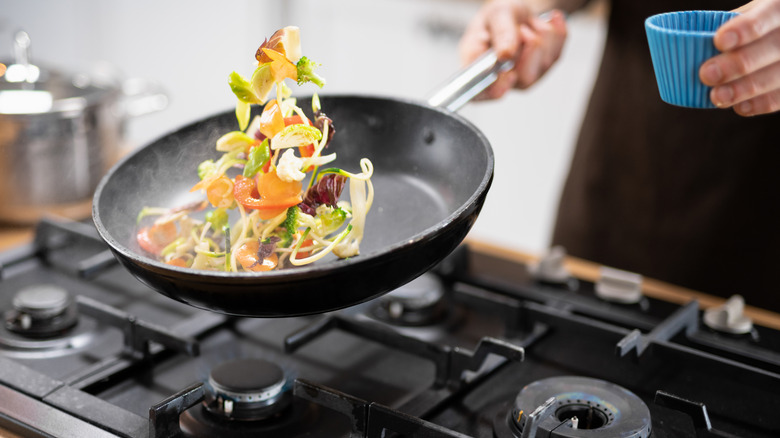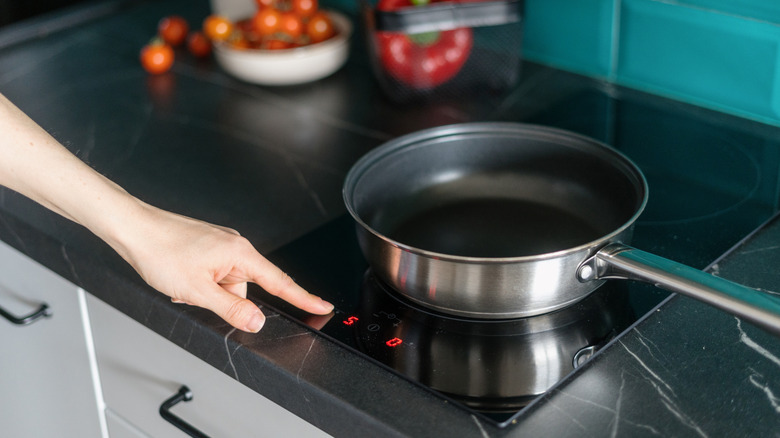Start Sautéing Like A Pro By Avoiding This Huge Mistake
Spend enough time in the kitchen, and sautéing is a cooking technique you'll come across again and again. Whether you're sautéing mushrooms for a flavorful side or searing shrimp for a pasta dish, sautéing is a go-to method in countless recipes — so it's one worth mastering. You might already know that not flipping your food while sautéing isn't a big deal, but according to Dennis Littley, chef and recipe expert at Ask Chef Dennis, the real mistake to avoid is starting with a cold pan.
"Preheating your sauté pan is essential in my kitchen," Littley told us. "If the pan isn't hot enough, food tends to stick, steam, or cook unevenly. I look for a subtle shimmer in the oil to tell me it's ready." You can also test if the pan is ready with a few droplets of water – they should sizzle and evaporate almost immediately.
To prevent a soggy or unevenly cooked result, it's also best to add the oil to a hot rather than cold pan. "The oil or fat usually goes in once the pan is hot, this helps create a protective layer that prevents sticking and promotes even browning,” Littley explained. And without enough heat, you can forget about flavorful browning.
A hot sauté pan is key
You might think that sautéing in a cold or lukewarm pan won't make a big difference, but it can have a huge impact on your final dish. If you want your meat to brown or your veggies to crisp up, a well heated pan is essential, as this allows the outside to sear without the inside overcooking. A cold pan prevents the Maillard reaction from occurring, which is crucial for developing a rich flavor and even browning.
Sautéing food in a cold pan also gives it a bigger chance of sticking, and this is a cleaning hassle which none of us want. A pan that is hot enough repels moisture, which acts as a non-stick coating — but a lukewarm pan actually attracts moisture, leaving you with protein or veggies that stick and tear.
A cold or lukewarm pan also likely means that your oil won't be hot enough, which means that it will soak into your food rather than helping it sauté. So if you're going for crispy and caramelized rather than greasy and soggy, preheat your pan properly. It might seem like a small detail, but a hot pan makes all the difference when you're trying to create a perfectly sautéed dish like a pro.

